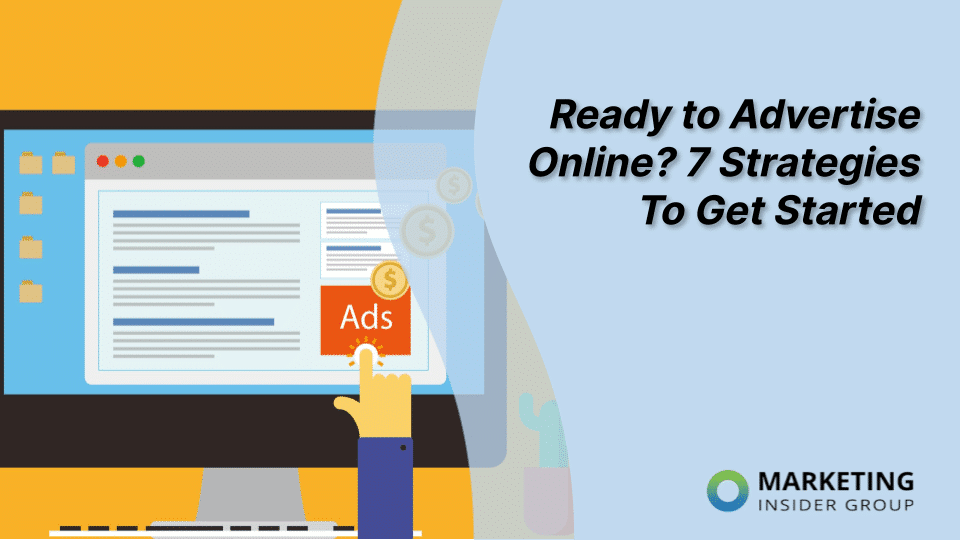
What is Dynamic Marketing Strategy and How to Get Started
It’s a tough world out there. Brands are competing against one another to reach the same audience pool. Every company is looking to squeeze as much ROI out of each marketing campaign as possible, constantly searching for their next edge. The result? Marketers are looking to reach their intended audience in an innovative, never-been-done-before way.
This is a big ask, especially with more and more brands entering the marketplace every year. And while digital marketing was once seen as innovative, it’s viewed as mandatory today. Because of this, more marketers are turning to dynamic marketing strategies as a way to better reach their audiences.
What is Dynamic Marketing and Why is it Beneficial?
Put simply, dynamic marketing is a strategy designed to be adaptive and flexible based on customers’ behaviors and customer data. It’s a way to respond based on evolving technologies, platforms, and preferences. Marketers must keep their target audience in mind as they look to optimize their current and future campaigns.
There are several benefits of going with a dynamic marketing approach, especially when you lean on the expertise of a well-established agency. First, because you’re adapting to current needs you are seen as a responsive brand. You’re prioritizing your customers, meaning you are creating more meaningful, positive relationships with them. This leads to the second main benefit which is a boost in sales and customer retention. When customers are more attuned to your brand, they are more likely to think of it when it comes to making a purchase.
Lastly, dynamic marketing is data-driven, which means you can make decisions based on what has and hasn’t worked in the past. Instead of relying on your gut instinct, you are more confident in the direction and decisions you’re making for the brand. Being a data-forward business is crucial these days, especially with the third-party cookie phasing out. According to Hawke, marketers need to turn to first party-data to collect privacy safe data on their audience pool. First-party data can be collected through customer surveys, lead generation forms, email marketing, chatbots, and more.
How to Ensure Success
In order for a dynamic marketing strategy to be successful, there are certain components or tactics that you’ll want to ensure are in place.
Personalization
Personalization is non-negotiable these days. Consumers want to feel like you have their best interest in mind and that you truly understand their needs. A recommended products widget on your site can redirect browsers to make a purchase based on prior search and purchase behavior.
Automated Decisioning
There are times when a decision can be made without your input. By leveraging new tools and technologies, some parts of your campaign can be put on autopilot. The automated decision making process occurs once data is collected and stored. Fluctuating airline ticket prices are a perfect example of this type of decision-making in action. The airline is not manually adjusting the price, rather it is adjusted based on recent search and demand history.
There are numerous platforms to leverage today that can help with automated decisioning. Depending on your business needs, you can leverage something like ZenDesk for customer support or Optimizely to get more out of your campaigns, for example. Many of these platforms leverage AI, predicting the best outcome for the task at hand.
Tracking
How can you know if something is going well if you’re unable to track it? Tracking allows you to create benchmarks, or data points that you’re trying to achieve. It’s a way to evaluate how your dynamic marketing strategy is going and how it compares to what you were doing before. Again, lean into tracking tools and platforms to take the manual work of analysis out of it.
How to Implement Dynamic Marketing
You understand what dynamic marketing is and you know what is needed for success. You’re likely still wondering how to implement it. Of course, how you go about it will vary based on your industry, your objectives, and your current positioning in the market. Below, some general guidelines or steps to consider with this approach.
Set Your Goals
Before you go any further, it’s important to take a moment and set your goals. As a marketer, what are your main objectives? Are you looking to generate leads or increase conversions? Are you looking to establish brand authority? Each goal will have a different path for you and your team to take. For instance, generating leads may mean leaning into a social-media first campaign while increasing conversions may mean launching a referral program.
As you’re setting your goals, be sure they are SMART goals. Be as specific, measurable, attainable, relevant, and time-based as possible. Instead of “establish better brand authority” say “create 10 high-quality, SEO-driven blog content marketing pieces per month to increase brand authority.” Also, when it comes to attainability, don’t set a goal that you know is impossible to reach. Divide a big goal into several smaller goals, ones that you know you can reach within a given timeframe.
Recognize Your Hurdles
Alongside writing your goals, make a note of what hurdles or challenges you’re likely going to face. If you’re a small marketing team, bandwidth may be the biggest issue. If you’re focused on a new product launch but the product isn’t ready yet, awareness may be an issue. Knowing what you’re up against will better position you to reach your goals as you’ve intended.
Utilize Data in order to Be Flexible
This is where the dynamic part of dynamic marketing comes in. Being dynamic means being flexible, leaning on your data gathering to make informed decisions. Think about the types of data that would be most beneficial. Would knowing what other types of content your audience is reading help inform how to reach them? If so, you could utilize Google Analytics or Quantcast to get a better sense of your audiences’ psychographic profiles.
Leveraging as much first-party data as possible will allow you to have an accurate sense of your audiences’ needs. However, it’s also important to look at the overall landscape. An economic recession could significantly alter how and when consumers are making purchases. In this instance, you may need to broaden your target audience to reach your sales goals. If you’re considered a luxury good, repositioning yourself may help convince individuals the need for your product even during a financial downfall.
Analyze and Optimize
Like with any marketing strategy, your work doesn’t stop after you’ve deployed a campaign. In order to be dynamic, you need to analyze how everything is progressing and take the time to adjust as needed. This is particularly the case if you’re experimenting with a new type of strategy. After the first initial days post-launch, consider a frequent review cycle to ensure everything is going as intended. It’s better to catch something early and optimize than to be surprised down the road.
Conclusion
Dynamic marketing strategies are only as good as the marketer deploying them. In order to maximize their efficiency, keep your audience persona in mind. Think about their needs before you think of how to best evolve your approach. As platforms, technologies, and trends continue to change, adapting a dynamic marketing strategy can be a game changer for your business.






